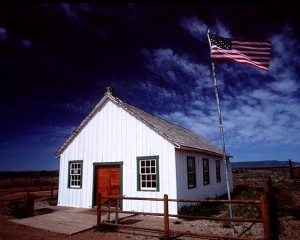It’s safe to say that Radon exposure is a pretty big deal. It is the second leading cause of lung cancer in the US, right behind first-hand tobacco smoke. Second-hand tobacco smoke is actually the third leading cause of lung cancer.
Where does it come from? Well, hopefully you’ve read enough on the deadly gas by now to know that it seeps up from the ground. It is actually a naturally occurring gas that is a decay product of uranium and thorium. As the aforementioned elements break down they produce radon gas, which is colorless, odorless and tasteless. Since most soil is rich with one of those two elements, radon tends to be pretty common.
The gas seeps into a residence or building through cracks in the foundation, holes in the wall and many other structural weaknesses. The only way to identify it exists in a residence or building is to test specifically for it. While most real estate agencies and government departments push heavily for homeowners to have their residences tested for the gas – there are a few places that tend to be overlooked.
One of the widely overlooked buildings, which happen to be a cornerstone of our society – or every society for that matter – is our schools. Without sounding too morbid, every day our children – our future – are basting inside a building which may or may not house an incredibly poisonous gas.
Legislators around the country are starting to take the issue more seriously and rightfully so. According to the EPA, a survey was conducted at schools nationwide to find estimated radon levels. It was discovered that nearly one in five have at least one schoolroom with a short-term measurement above the action level of 4 pCi/L (picoCuries per liter) – the level at which EPA recommends that schools take action to reduce the level. Furthermore, the EPA estimates that more than seventy thousand (70,000) schoolrooms in use today have high short-term radon levels.
New York Serves as an Example
Recent reports are coming out of New York that the presence of radon is quite high throughout the state. Furthermore, it has been discovered that many schools in the state have yet to be tested for the deadly gas. A Gannett analysis found that 1,832 school buildings have yet to be tested for radon. To solidify the severity of the situation, it should be noted that more than 400 of those untested buildings reside in an area of the state which the US EPA deemed as “high risk” locations for elevated indoor radon levels. In other words, the probability is quite high that many of those schools have dangerous levels of radon somewhere within them.
The real issue is that testing for radon in schools, buildings sometimes as large as 60,000 square feet can be quite expensive. This information was confirmed by George Schambach, a licensed home inspector with an active radon certification at Professional Home Inspection in Binghamton. Schambach says that a 60,000 square-foot building can cost in excess of $35,000 to $60,000 for testing.
It’s likely that’s one of the biggest reasons legislators are hesitant about requiring radon testing in schools by law. It shouldn’t really matter though, because radon exposure is cumulative. The longer our children spend in high levels of radon, the more likely they are to get cancer. Worse yet, any exposure they have to the deadly gas will stay with them for life.
All Schools Should Be Tested For That Matter
William Angell, a professor for the University of Minnesota who is also the chair of the World Health Organization’s Radon Prevention and Mitigation Working Group, believes without a doubt that schools should be tested.
“Definitely, schools should be tested. For more than 20 years, there has been a clear recommendation for schools to test for radon. After 20 years, it’s time for buildings that haven’t been tested…to be tested, and legislation that encourages that, or requires that, is, in my opinion, very important.”



